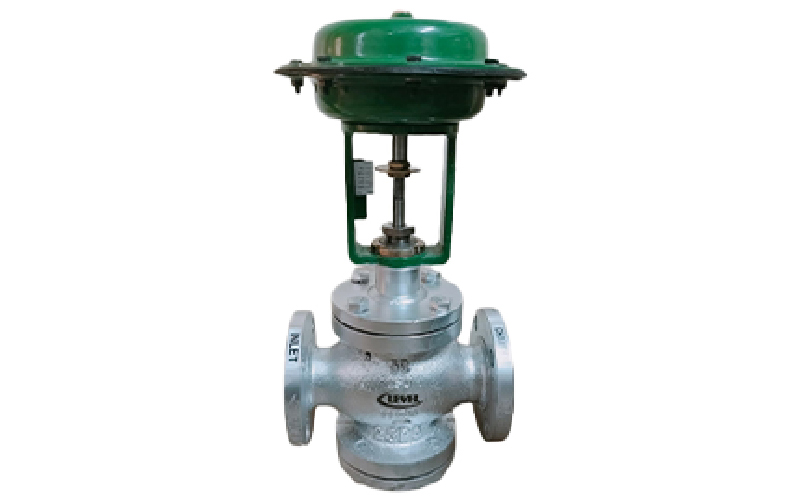Control valves play a pivotal role in the realm of process automation, acting as the essential mechanisms that regulate the flow of fluids within a system. From water treatment plants to chemical processing facilities, control valves are critical components that ensure operational efficiency and safety. This article delves into the key components of control valves, their functions, and their significance in process automation, particularly highlighting the importance of selecting a reputable control valve supplier in Ahmedabad.
What Are Control Valves?
Control valves are devices that manage the flow and pressure of fluids within various systems by opening, closing, or partially obstructing flow paths. They are typically operated automatically based on signals from a controller, which adjusts the valve’s position to maintain the desired flow rate, pressure, temperature, or other process variables. The ability to modulate flow precisely makes control valves indispensable in a variety of industries, including oil and gas, pharmaceuticals, food processing, and HVAC systems.
Key Components of Control Valves
Understanding the critical components of control valves is essential for grasping how they function effectively in process automation. The main components include:
Valve Body
The valve body is the main part of the control valve and houses the internal components. Pressure and temperature of the fluid being controlled are not a problem. The valve body can come in various designs, such as globe, ball, butterfly, or gate valves, each serving different flow control applications.
Actuator
The actuator is the mechanism that moves the valve plug or disc to control fluid flow. There are several types of actuators, including pneumatic, electric, and hydraulic actuators. Pneumatic actuators use compressed air to produce movement, while electric actuators use electric power. The choice of actuator depends on the application requirements, including response time, control precision, and environmental conditions.
Positioner
A positioner is an optional but highly beneficial component that ensures the valve reaches the desired position accurately. It receives a signal from the process control system and adjusts the actuator’s input to achieve the target position of the valve. Positioners improve the responsiveness and accuracy of control valves, particularly in dynamic systems where rapid adjustments are necessary.
Valve Trim
The valve trim includes internal components such as the plug, seat, and stem. These parts work together to regulate fluid flow through the valve. The design of the trim affects the valve’s flow characteristics, pressure drop, and control range. Common trim designs include linear and equal percentage, which dictate how flow changes concerning valve position.
Seals and Packing
Seals and packing are critical for preventing leakage and ensuring the valve operates smoothly. These components provide a tight seal between the valve body and the moving parts, preventing fluid from escaping and minimizing wear over time. Proper maintenance and selection of materials are crucial for prolonging the life of these components.
The Role of Control Valves in Process Automation
Control valves are integral to maintaining optimal process conditions in automated systems. Here are some key roles they play:
Flow Regulation
Control valves adjust the flow rate of liquids and gases to ensure processes operate within specified parameters. By modulating the flow, they help maintain desired conditions such as temperature, pressure, and level, essential for safe and efficient operations.
Pressure Control
In many applications, controlling pressure is critical for safety and efficiency. Control valves manage pressure fluctuations by opening or closing in response to changes in system pressure, preventing potential hazards and maintaining stable process conditions.
Temperature Management
In thermal processes, control valves regulate the flow of heating or cooling fluids to maintain optimal temperatures. This is crucial in industries like chemical manufacturing, where temperature variations can significantly impact product quality.
Energy Efficiency
By optimizing flow rates and pressure conditions, control valves contribute to energy savings in process systems. Properly functioning control valves reduce energy consumption by ensuring that pumps and compressors operate efficiently, leading to lower operational costs.
Safety Assurance
Control valves play a vital role in safety systems by preventing overpressure and ensuring that hazardous materials are managed correctly. In critical applications, they can be integrated with safety shutdown systems to protect both personnel and equipment.
Choosing a Control Valve Supplier in Ahmedabad
When selecting a control valve supplier in Ahmedabad, it is essential to consider several factors:
• Quality of Products: Ensure the supplier offers high-quality control valves that meet industry standards.
• Expertise and Experience: A supplier with a proven track record in the industry can provide valuable insights and recommendations based on specific needs.
• Customer Support: Reliable customer service and technical support are crucial for addressing any challenges that may arise during installation or operation.
• Customization Options: Depending on the application, the ability to customize valves can be an important factor in achieving optimal performance.
Conclusion
Control valves are fundamental components in process automation, facilitating the precise management of fluid flow, pressure, and temperature. Understanding their key components and roles enhances the ability to select and maintain these vital devices effectively. For industries in Ahmedabad seeking reliable control valves, partnering with a reputable control valve supplier in Ahmedabad can ensure the availability of high-quality products and expert support, ultimately contributing to the efficiency and safety of their operations.












